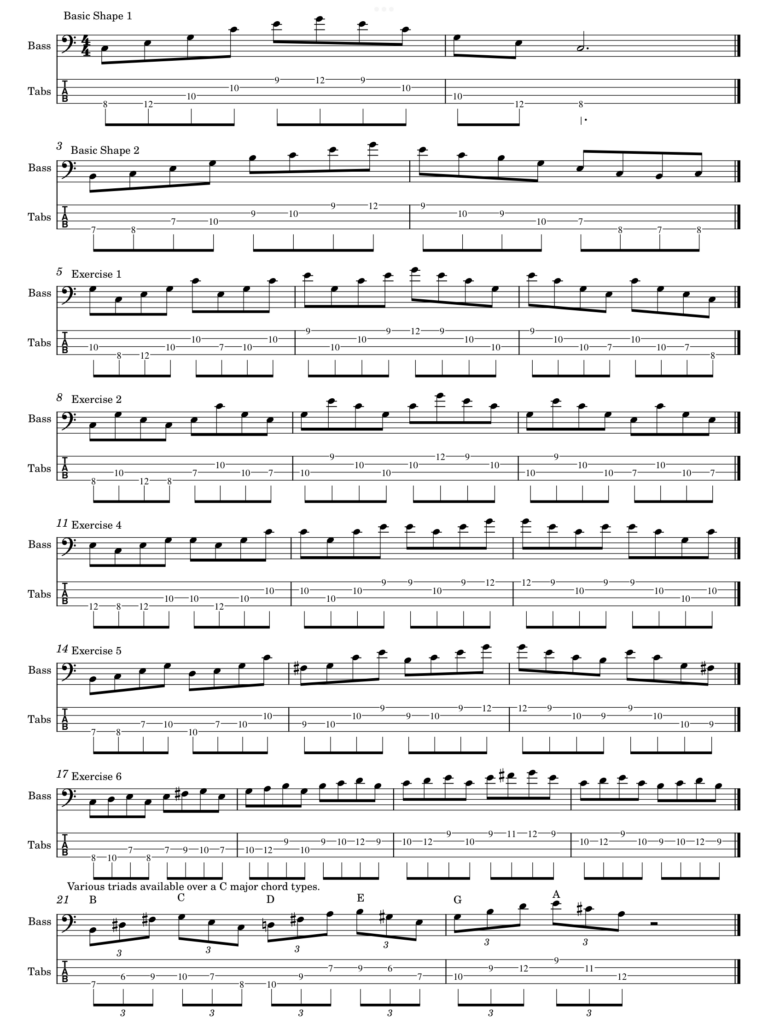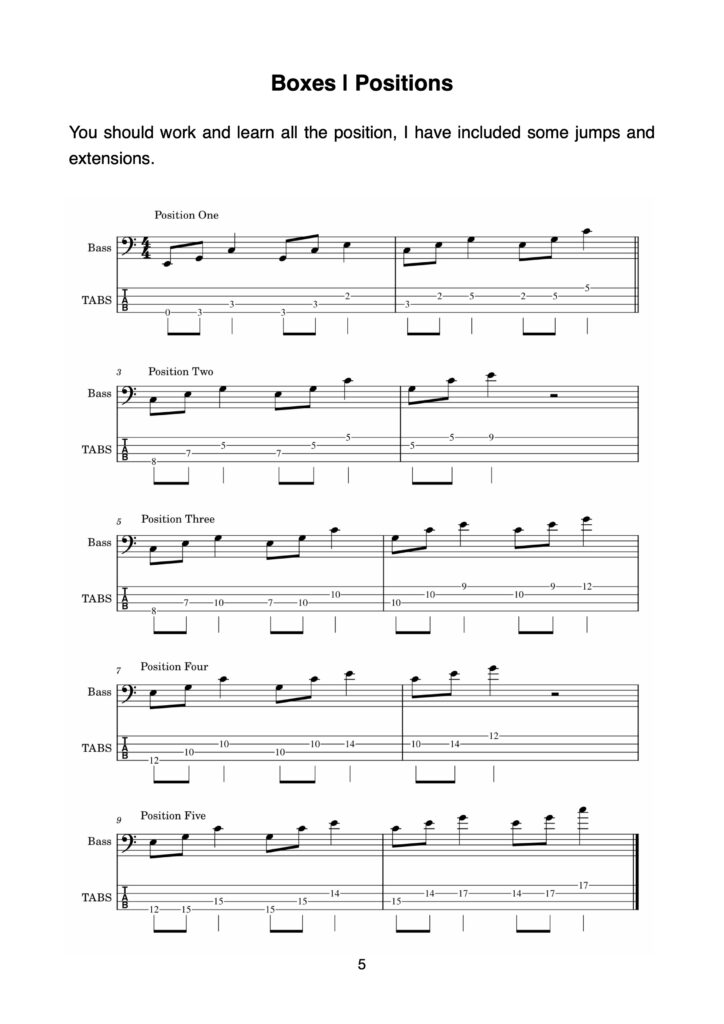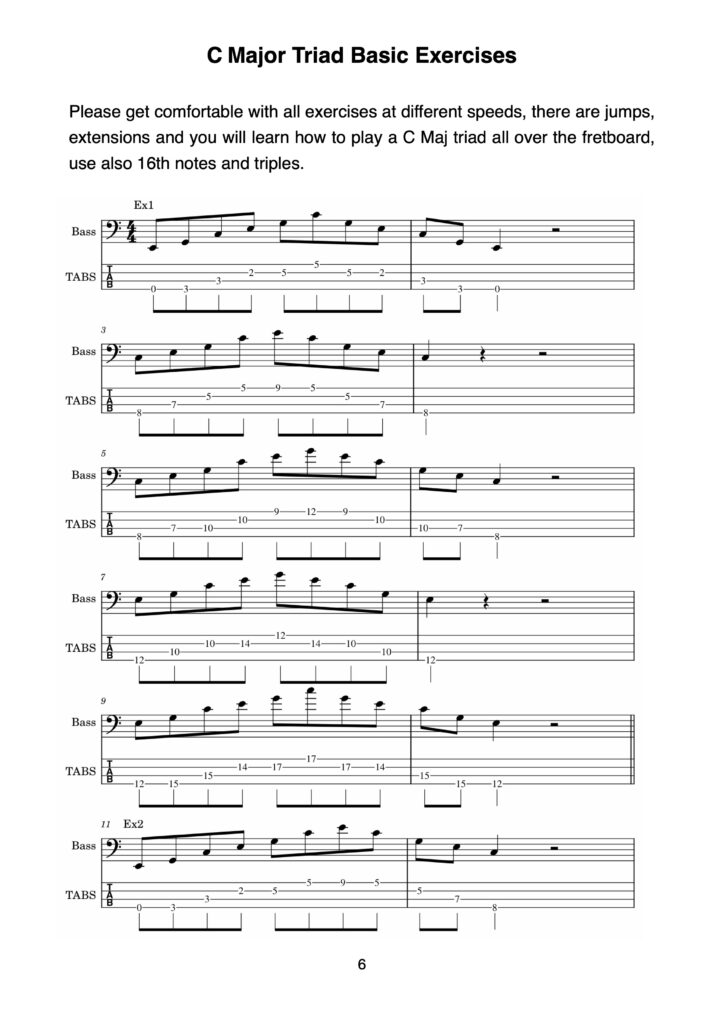A Comprehensive Exploration
Understanding Major Triads
Major triads stand at the heart of harmony. This section shines a light on the C Major Triad, diving into its theory and practical uses.
Theoretical Depth
At its core, a major triad forms the foundation of major chords. It includes three critical notes: the root, which names the chord; the third, which defines its major characteristic; and the fifth, which often leads back to the root. These notes play a crucial role in bass lines, fills and solos, remaining a key element in your bass toolkit over time.
When diving into major triads, it’s vital to explore their inversions across the fretboard, not just a single shape. This understanding allows you to create unique phrases, utilizing these three notes in diverse ways.
For instance, a C major triad fits perfectly over chords like Cmaj7, Cmaj9, and Cmaj#11, as well as dominant versions like C7, C7#11, and C7b9.
Fretboard Mastery
Gaining fretboard fluency means mastering major triad positions and inversions. I introduce “boxes” and “positions” to visually map out the major triad shapes along the neck. The exercises are crafted to challenge you with jumps and extensions, pushing you to navigate the fretboard seamlessly and apply these shapes in varied musical scenarios creatively.
Practical Applications
Applying these theories in practice is crucial for deep understanding. This part will detail exercises focusing on triad inversions, alongside licks and permutations. This method enriches your musical vocabulary, allowing for the construction of intricate and captivating lines.
Creative Applications
Now, I urge you to forge your musical phrases using major triads. Stepping out from typical patterns to explore fresh ideas is rewarding. By demonstrating how triads enhance bass lines and fills, we aim to spark your creativity. Major triads are more than simple chord structures; they are foundational music blocks. Whenever you hear a melodic piece, chances are, triads are in play.
Basic Exercises




Study Plan
- Triads Shapes – Start by exploring low, medium and high positions of the triad and play the exercises.
- Triads Applications – Apply the various triads to different chords and explore the other available triads.
- Triads Permutations – Practice various permutations to build dexterity and familiarity.
- Triads Fills – Learn fills and use them in your playing to add creativity.
- Practical Application – Take a groove you enjoy and apply all the concepts you’ve practiced.
C Major Triad Ex.1
C Major Triad Ex.2
C Major Triad Ex.4
C Major Triad Ex.5
C Major Triad Ex.6
